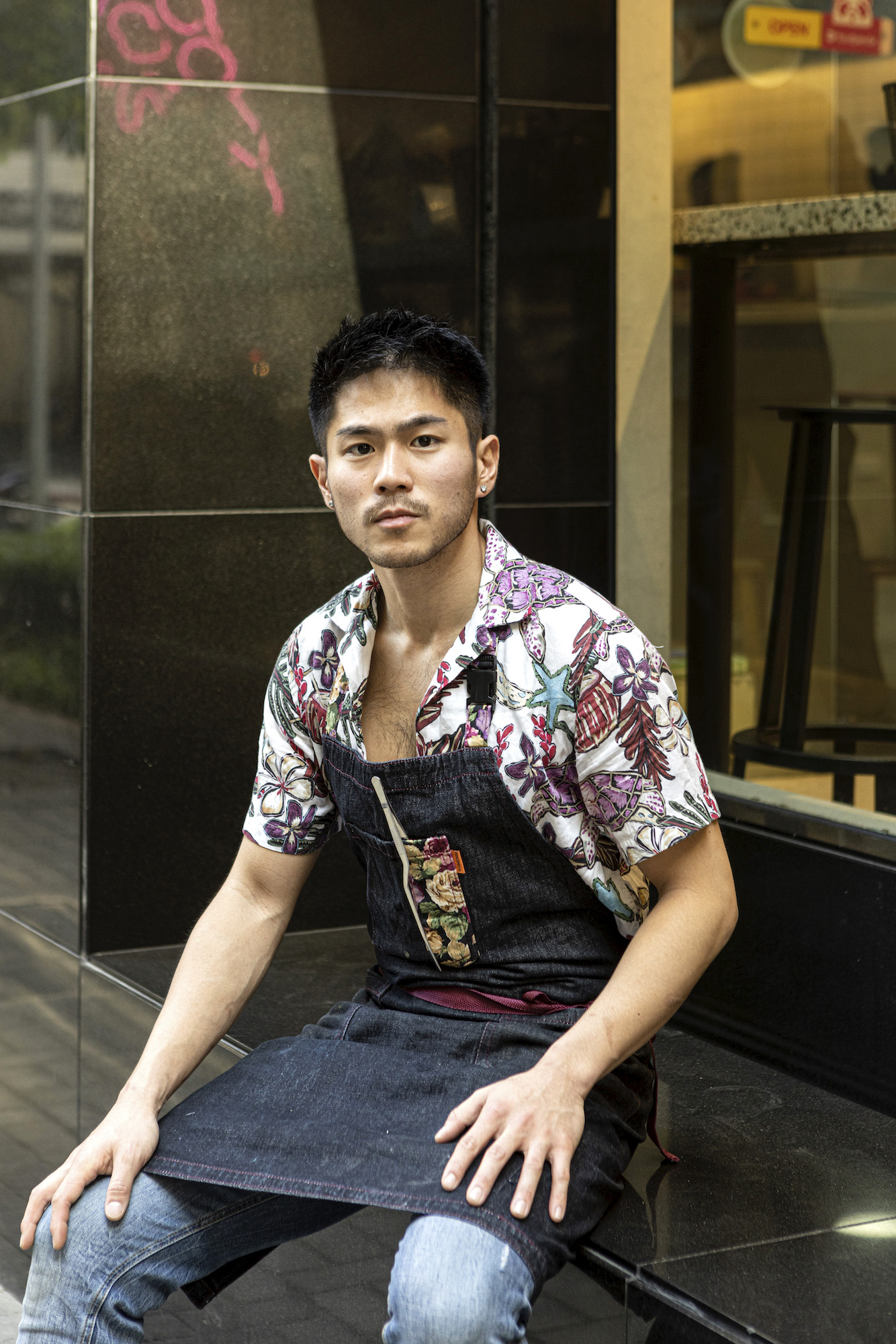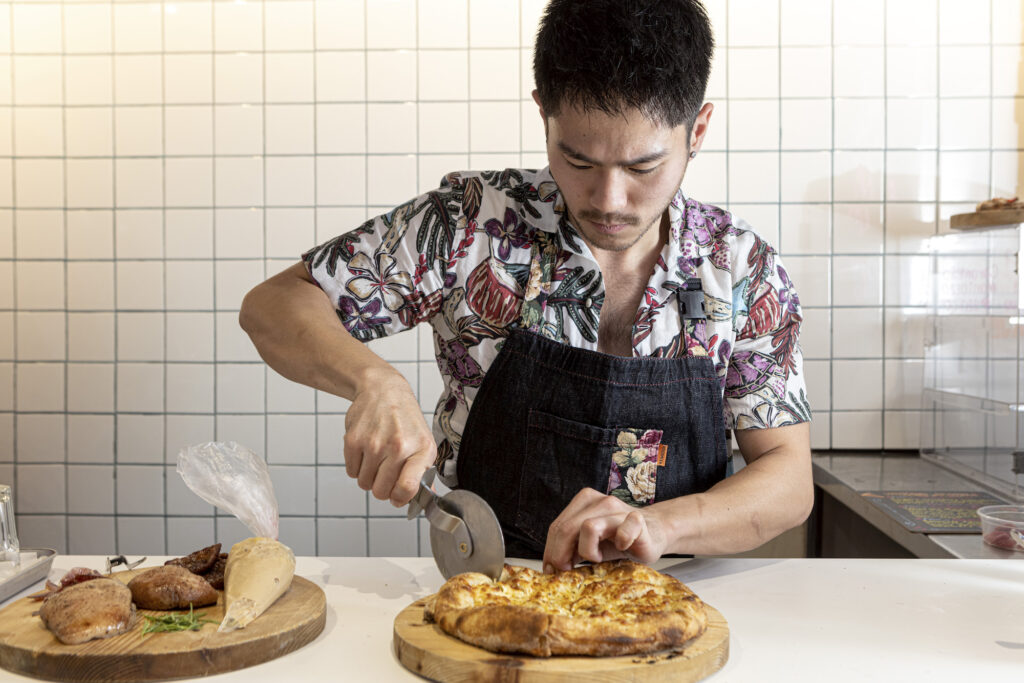Yuichi Ito speaks with mild articulation. He enumerates the acclaimed chefs he has fed at The Pizza Bar On 38th, which sits on the 38th floor of the Mandarin Oriental, Tokyo.
“Pierre Gagnaire, a very famous chef in French cooking. Carme Ruscalleda from Spain. I cooked for her and Gagnaire twice. I cooked for Daniel Calvert so many times that we became friends. Chef Enrique Olvera of Mexico’s Pujol. I cooked for Santiago Fernandez, the chef of Central in Peru.”
He pauses as if he stumbles upon a realization. “Even great chefs crave pizza. At one point, you can get tired of food at fine dining but there will always be a craving for a good pizza.”
The root of it all


Ito was born in Japan to a Japanese father and a Filipino mother before moving to the Philippines when he was young. It was here where he found cooking as his calling. “I realized I loved cooking when I was in high school. My friends would usually come to my place and we would have drinks together,” he says.
“The thing is, drinks are not enough. You always need food on the table. Seeing people come together at the table and enjoy the food you cooked for them, and how it gave them happiness—I loved that. I want to serve food that will feed the soul and feed your mind, your body and your heart. I want to create something that you would remember.”
He studied French cooking at the International School for Culinary Arts and Hotel Management in Katipunan and worked at Edsa Shangri-La under Italian chef Roberto Cimmino. One day, Cimmino served him burrata ravioli with sage butter. But this seemingly simple dish however was life-changing. “I didn’t grow up liking Italian food, but I remember this dish. Four ingredients on one plate? It was so simple. It opened up my mind to Italian cooking.”
“I want to serve food that will feed the soul and feed your mind, your body and your heart. I want to create something that you would remember.”
Cimmino pushed Ito to pursue a career in Japan. “He said, ‘There will be more possibilities and opportunities for you there.’ He introduced me to his friend in Tokyo whose Italian restaurant had a Michelin star. I was training there for less than a year when the chef decided to leave, and I thought maybe I should move somewhere else as well. That’s when I got into Mandarin Oriental, Tokyo where I stayed for 10 years. That was the start of my pizza journey.”
From The Pizza Bar On 38th to Crosta Pizzeria
The 29-year-old reminisces about the beginnings of The Pizza Bar On 38th. “When we opened The Pizza Bar, we had days when we had no clients at all.” Now it is recognized by the Michelin Guide and won a Bib Gourmand for seven years in a row. It was also awarded the most prestigious award for pizzerias by Gambero Rosso with three slices. (“There are only 16 restaurants in the world that have it.”)
The Pizza Bar On 38th also went on to become the best pizzeria in Japan, the third best in Asia-Pacific, and the 16th best in the world by 50 Top Pizza. “We didn’t expect it to be number three in Asia-Pacific. I still get goosebumps whenever I remember all the things that were happening at that time. We arrived at the party and we didn’t know anyone. We were at the end of the room—the furthest. We were a bit intimidated by everyone.”
Crosta co-founders Ingga Cabangon Chua and Tommy Woudwyk visited Yuichi Ito at his pizzeria in Tokyo shortly after. “Tommy was joking and said, ‘Maybe you should go back to Manila!’”
It was at the 50 Top Pizza awards ceremony held in Bangkok in 2022 where Ito decided to reconnect with his Filipino roots. “I saw this group of Filipinos—from Wildflour, A Mano, and Crosta [which was awarded the best pizzeria in the Philippines]. After the ceremony, I came up to them and said, ‘Hey guys! I’m Filipino!’ I started talking to them and told them I wanted to visit their restaurants when I visit Manila.”
Crosta co-founders Ingga Cabangon Chua and Tommy Woudwyk visited Ito at his pizzeria in Tokyo shortly after. “Tommy was joking and said, ‘Maybe you should go back to Manila!’” Ito recounts.
Eventually, all the accolades he received while in Tokyo had Ito asking himself “What’s next?” Japan ranks only second after France with the most Michelin-starred restaurants in the world, and being part of this food scene has him brimming with so many ideas. He feels it will be most rewarding to use this knowledge in the Philippines. “I feel like I have more space in the Philippines to create something very unique,” Ito says.
Making some special dough in Manila
He plans to incorporate flavors from the Philippines (like pairing aratilis with cold cuts on a pie) and Japan (he once paired confit of swordfish and topped it with ikura). “A lot of this inspiration of what I put on the pizza comes from when I go to the market. I’m more of a visual person. I like seeing things. From there I start to think of what to put with flavors.”
Only two months in as Crosta’s new head chef, Ito is already busy with new flavors for the pizzeria. “We do weekend specials and so far we’ve created eight or nine specials since I arrived.”
The Morty & Ella 2.0 pizza has dollops of truffle bechamel on every slice, contributing a rich umami to every bite. This is all beautifully covered in thin slices of mortadella and topped with light stracciatella cheese. This is then finished off with crunchy pistachio and fresh parsley.
“We don’t use too much cheese for this one because we want you to taste the full flavor of the mortadella. When you put too much cheese it becomes really heavy,” Ito shares. Apparently this flavor can sell out so quickly that they had to put a limit on how many one can order.
“The King” marinara is the next level (and more interesting) margherita pizza. Pomodoro pelati sauce and Parmigiano Reggiano di vacca Bianca is the base for sweet cherry tomatoes and salty, flavorful Cantabrian anchovies. He then drizzles a punchy bagna càuda to uplift the flavors of the anchovies.
Duckin’ Good!! meanwhile has thin slices of homemade duck prosciutto that Ito cures himself. He pairs this with torn figs marinated in red wine and foie gras mousse. “I see it like how a painter paints a canvas. It’s empty and you can put anything you want,” he admits. “So what I did was I tried to create different types of sauces. I try to mix flavors that you would normally do for cooking like mixing salty, sour, sweet, and spicy on a pizza. And adding textures like crunchy, crispy, soft, airy, juicy on one pizza as well, which usual pizza chefs might not do because they stick to traditions,” he says.
Finally, the Pumpcetta pie combines unexpected flavors that are so balanced when eaten together. Ito slathers a subtly sweet pumpkin sauce on every slice, followed by ribbons of homemade pancetta, goat cheese, and preserved pumpkin.
Crosta is pizza royalty
Ito has taken more control of his ingredients as he started making his own duck prosciutto and pancetta. Soon he plans to create more ingredients in-house to elevate the flavors he tops his pizza with. He already has plans to create a pizza omakase-type restaurant with Woudwyk and Cabangon Chua where diners can sample many different slices of different flavors instead of committing to a whole pie of one flavor.
“Pizza always brings people together. You eat from the same box, you eat from the same dough.”
Ito and Crosta are a perfect fit. They both don’t hold back. They love pushing boundaries. Clearly, with Ito at the helm, Manila is entering an exciting era of pizza with unexpected flavor profiles and a sophistication you won’t find on anyone else’s pie.
Nevertheless, whatever comes out of the oven and or however Ito constructs his pizzas with strategic air pockets and a marriage of unlikely ingredients, this dish is always meant to be shared.
“Pizza always brings people together. You eat from the same box, you eat from the same dough.”

